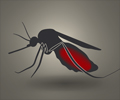Malaria remains a significant health challenge in India, particularly in rural areas. Efforts are underway to control and eliminate the disease.

Malaria - World Health Organization (WHO)
Go to source)
Malaria: New Insights
Malaria is a life-threatening disease spread to humans by female Anopheles mosquitoes. It is preventable and curable. The report showed that the number of estimated malaria cases in India decreased to 2 million cases in 2023 from 6.4 million in 2017 (69 percent decrease). Similarly, the estimated malaria deaths decreased to 3,500 from 11,100 (68 percent decrease) during the same period.‘In 2023, #India made strides in reducing #malaria but still accounted for 50% of all estimated cases in the WHO South-East Asia Region.’





As a result, “India exited the High Burden to High Impact (HBHI) group officially in 2024”, the WHO said. The HBHI approach is a targeted malaria response that is used in several countries to accelerate the pace of malaria elimination in countries with high malaria burden. India joined the HBHI initiative in July 2019. The HBHI initiative was launched in four states in India: Chhattisgarh, Jharkhand, Madhya Pradesh, and West Bengal. The Region had eight malaria endemic countries in 2023 -- accounting for 4 million cases and contributing 1.5 percent of the burden of malaria cases globally. Just over 48 percent of all estimated cases in the region were due to P. vivax.
However, from 2000 to 2023, malaria cases reduced by 82.4 percent, from 22.8 million in 2000, and incidence reduced by 87.0 percent, from 17.7 to 2.3 per 1000 population at risk, the report said. “The decrease can mainly be accounted for by a decrease in India of 17.7 million estimated cases and a decrease in incidence by 93 percent, from 20 to 1.5 per 1000 population at risk,” the WHO reported.
At the same time, India and Indonesia accounted for about 88 percent of all estimated malaria deaths in this region in 2023.Notably, Bhutan and Timor-Leste, from the Region, reported zero malaria deaths since 2013 and 2015, respectively, while Sri Lanka was certified malaria-free in 2016.“The progress follows the highest ever political commitment by Member countries, matched by tangible actions and unstinted efforts over the years down to the sub-national level,” said Saima Wazed, Regional Director WHO South-East Asia.
“However, accelerated efforts against malaria must continue, to eliminate the disease in countries where malaria persists, and to sustain the progress in countries where the disease is on the decline or has been eliminated,” she added. Globally, the WHO data reveals that an estimated 2.2 billion cases of malaria and 12.7 million deaths have been averted since 2000, but the disease remains a serious global health threat, particularly in the WHO African Region.
Advertisement
Reference:
- Malaria - World Health Organization (WHO) - (https://www.who.int/india/health-topics/malaria)











